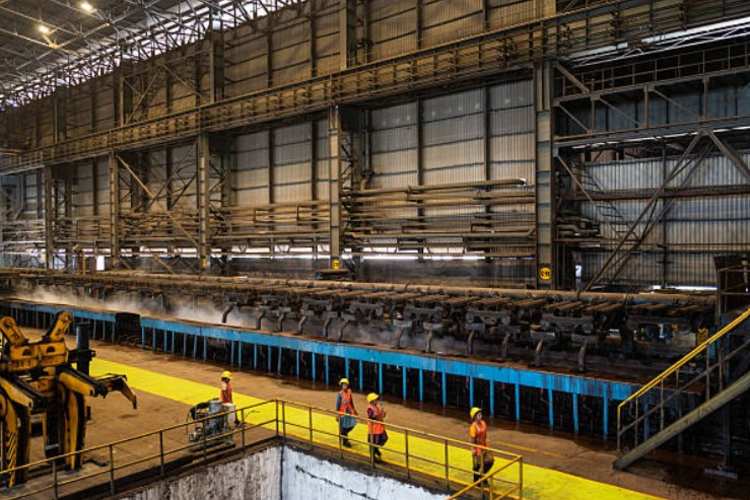
Boosting private capex: Despite persistent global shocks, India’s economy has proved resilient; yet the finance ministry’s latest Monthly Economic Review warns that lingering geopolitical conflicts and a newly escalated trade war led by US President Donald Trump could undercut growth prospects for 2025-26. A prolonged bout of uncertainty, the report stresses, will weigh heaviest on private-sector investment, ending what it calls the era of easy pickings for India Inc.
Corporate India entered the year under pressure to revive capital spending, but boardrooms are now recalibrating. Executives worry that erratic commodity prices, supply-chain snags and unpredictable tariff regimes could render new projects unviable. The ministry says the very perception of an extended downturn is enough to push firms into “wait-and-see” mode, derailing the virtuous cycle of investment, income growth, demand expansion and capacity creation that carried the economy over the past decade.
READ | Corporate finance: New playbook seeks to plug Rs 1 trillion funding gap
Global headwinds intensify
The external environment offers little relief. The Russia-Ukraine war, the Israel-Hamas conflict and widening tariff skirmishes have already pinched shipping lanes and fuel markets. Add Washington’s latest volley of punitive duties and retaliatory threats, and global trade becomes a minefield. For India, the fallout includes softer merchandise exports, costlier energy imports and heightened exchange-rate volatility—all of which erode corporate margins and dampen risk appetite.
Policymakers cannot control those shocks, the review concedes, but they can prevent uncertainty from feeding on itself. Inaction, it cautions, would let corporate caution harden into stagnation.
Funding gap widens
Access to finance is a critical chokepoint. A recent Policy Circle urges companies to diversify beyond bank loans by tapping bond markets, private-credit funds and fresh equity. The finance ministry agrees that India’s “large domestic economy” can still generate a self-reinforcing investment cycle—provided firms step up capital formation and tilt toward higher-margin products and better quality to stay competitive.
New Delhi, for its part, promises to “nudge” India Inc by pruning red tape and lowering logistics costs. Streamlined compliance rules, faster inspection clearances and seamless interstate freight corridors could shave crucial percentage points off project costs. The Centre also reminds critics that public-sector capex has been doing the “heavy lifting” for five years; now it wants the private sector to match that tempo.
Industrialists such as Kumar Mangalam Birla echo the call, while ratings agency ICRA predicts corporate spending will remain guarded through the first half of FY 2025 before production-linked incentives and lower global borrowing costs unlock new outlays (source?). Still, bridging the investment gap will require more than exhortations. Analysts say a credible glide path for tariff policy, faster dispute resolution and predictable environmental clearances would give boardrooms the confidence to green-light projects.
Opportunity in turmoil
The same trade tensions that unsettle planners also open doors. Multinationals seeking to “de-risk” supply chains from single-country dependence are scouting alternative hubs; India ticks many boxes, from a vast domestic market to an expanding pool of skilled labour. To seize the moment, officials are pursuing a trio of goals: strategic trade pacts that guarantee market access, domestic reforms that cut regulatory friction, and targeted manufacturing incentives that raise India’s share in global value chains.
The macro picture is not entirely grim. Softer vegetable prices, declining crude oil benchmarks and a 50-basis-point policy-rate cut since February have pushed down headline inflation and bolstered consumer sentiment. The ministry, however, tempers optimism: any flare-up in West Asia or the Black Sea could disrupt oil flows and reignite price pressures. Vigilant monitoring and swift policy intervention—via buffer-stock releases or calibrated fuel-tax tweaks—will be needed to preserve stability.
Boosting private capex
Another silver lining is improving public-finance metrics. The report also discussed the importance of managing public debt and creating conditions to boost private sector investment. If the government keeps borrowing in check, banks need not crowd out corporate borrowers, allowing lending rates to remain growth-friendly.
Strong reservoir levels and robust crop plantings augur well for rural incomes, while factory-gate surveys show an uptick in new-order books and business confidence. Manufacturing production has benefited from a weak rupee that boosts export competitiveness, though sustaining momentum will require quicker adoption of Industry 4.0 technologies and energy-efficient processes.
All told, India faces a testing year, but not one devoid of opportunity. Easing inflation, firm consumption, disciplined public finances and a resilient banking system provide ballast. To convert that stability into sustained 8%-plus growth, India Inc must overcome its investment hesitancy, and policymakers must deliver on long-promised structural reforms.
Doing nothing is the most expensive option: it would let uncertainty crystallise into slower job creation, weaker productivity gains and lost market share in a rapidly reorganising global economy. Conversely, bold but calibrated capital formation—supported by transparent regulation and diversified financing—could turn 2025-26 from a year of headwinds into a springboard for the next growth cycle.
